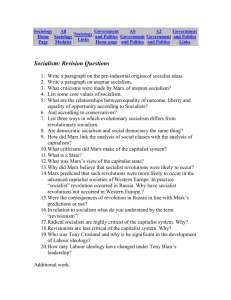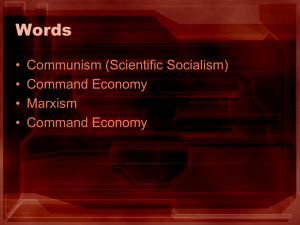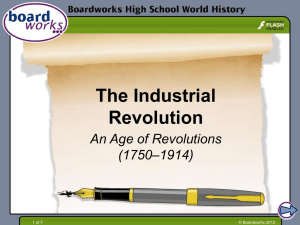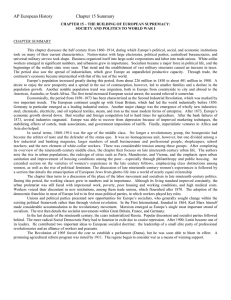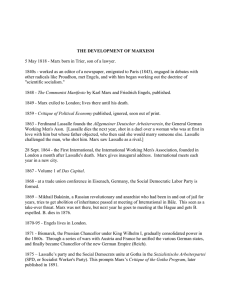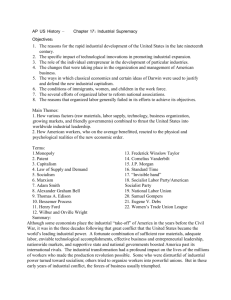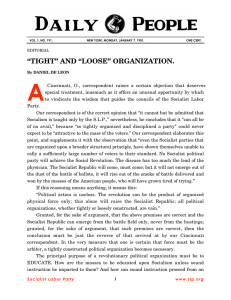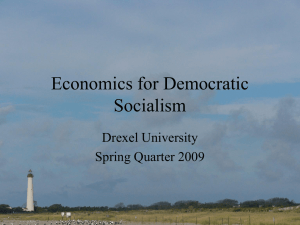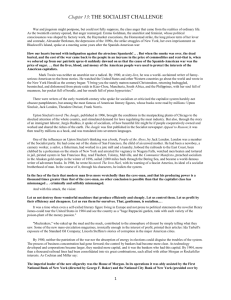Socialism and the Development of the Working Class
advertisement
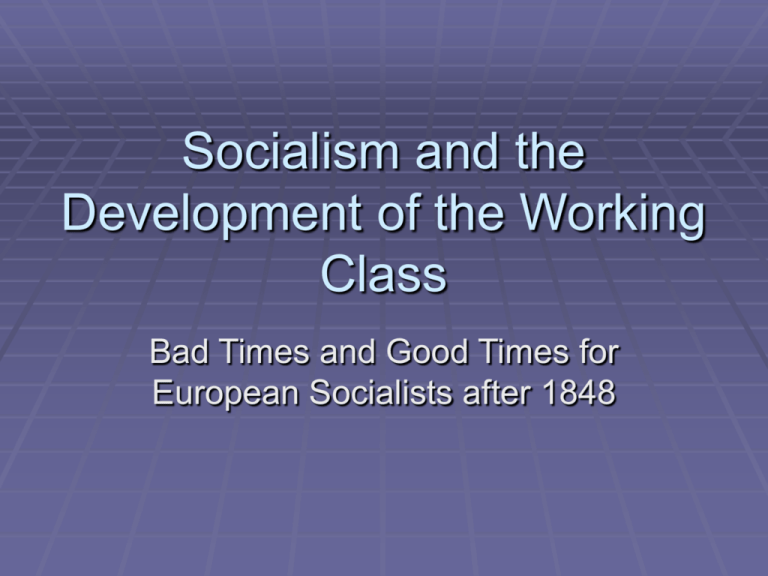
Socialism and the Development of the Working Class Bad Times and Good Times for European Socialists after 1848 I. The Decline of Socialist Ideas in the 1850’s and 1860’s II. Marx’s Criticism of Capitalism Elaborated in Das Kapital (1867) Capitalism would selfdestruct due to internal contradictions The Labor Theory of Value Overproduction and Eventual Destruction of the Bourgeoisie Abolition of Private Property and the Disappearance of the State and Government III. The Formation of a Mature Industrial Working Class Definition of a “Mature” Working Class The Effect of the Maturation of the Working Class Massive Drinking Problem began to decrease Family Life became more stable Instability remained, but was more the exception than the rule IV. Increase in the Standard of Living from 1850-1900 Real wages rose steadily for factory workers Improvements in diet increased physical health Better housing became available to at least skilled workers More recreational opportunities were available V. Still, Widespread Poverty and Hardship Very few factory workers were able to adopt the consumption patterns of even the lower middle class Wages differed drastically from industry to industry “Sweated” Labor Tailors disappear in the wake of “ready-made” clothing VI. The Advent of Welfare Legislation The Triangle Shirt Company Fire: New York City, 1911 Bismarck’s “cutting edge” welfare programs Works to moderate socialistic demands Types of welfare legislation introduced Uneven enforcement of this legislation VII. The Emergence of a SelfConscious Labor Movement The Shift of Leadership from the Middle Class Socialists to Skilled Working Class Leaders --Fabian Society (1884) --H.G. Wells --George Bernard Shaw The Stimulus of Legal Changes and the Extension of Suffrage VII. The Emergence of a SelfConscious Labor Movement (cont) The Growth of Trade Unions in the 1880’s Labor Union membership exploded --1910: 3 million workers in Britain unionized The Evolution of Socialist Parties Conflict between Unions and Socialist Parties over the use of a strike VIII. Karl Marx and the International Workers Movement Origins of the “First International” (1864) Broad and diverse membership Marxism = the most important strand of European socialism The significance of the “great depression” of the 1870’s VIII. The First International (cont) Interest in Marx and his ideas accelerated The complexity of Marxism and the popularization of Marx’s ideas “One thing is certain, I am not a Marxist.” IX. The Paris Commune The events of March to May, 1871 Marx and his followers believed that the inevitable revolution had begun The Collapse of the First International The demise of the Paris Commune The Creation of the Second International (1889) X. Socialist Revisionism: The German Socialist Party (SPD) At first, Government Opposition Compromising Marx: The Erfurt Program of 1891 Eduard Bernstein and Evolutionary Socialism (1899) More democracy and social reform needed, not a revolution X. The German Socialist Party (SPD) (cont) Revisionism rejected officially, but unofficially pursued The political success of the SPD and the growing distance between itself and the working class --1903: 3 million votes and 81 seats --Superbly organized --A conservative, nationalistic creature of vested interests XI. Anarchism: The Radical Socialist Alternative The priority of direct action “Propaganda of the Deed” No central theory or organization The dream of spontaneous revolutionary action—the “general strike” Conflict evolving within two branches of working class political culture XII. “Nationalistic Socialism” Period of real optimism about the possibilities of left-wing European politics Antithesis to the middle class culture that still dominated western Europe The power of nationalism to modify socialism Socialist policies and doctrines varied from country to country



